




placename:- Solway Moss
"SOLWAY MOSS / (Site of Battle 1543)"
placename:- Sollome Moss
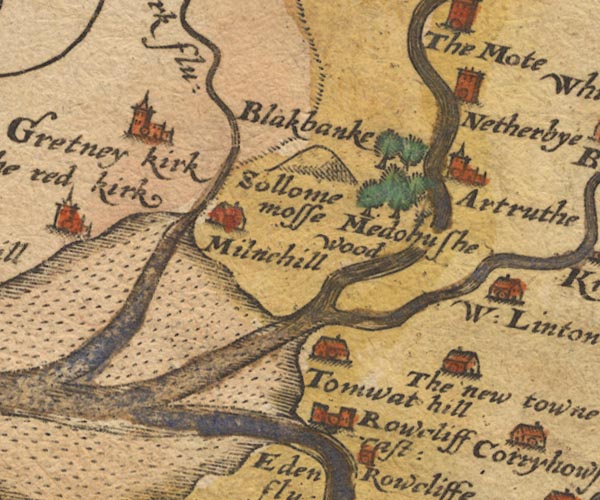
Sax9NY36.jpg
"Sollome moss"
item:- private collection : 2
Image © see bottom of page
placename:- Sollomos
courtesy of the National Library of Scotland
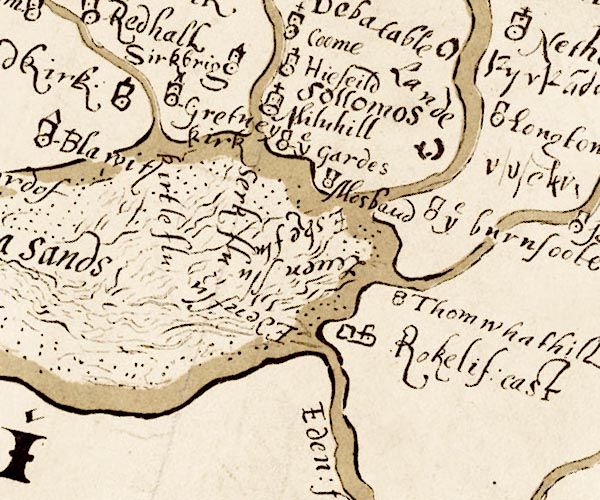
M048NY36.jpg
"Sollomos"
item:- National Library of Scotland : MS6113 f.267
Image © National Library of Scotland
placename:- Sollome Moss

SP11NY36.jpg
"Sollome Moss"
area
item:- private collection : 16
Image © see bottom of page
placename:- Sollome Moss
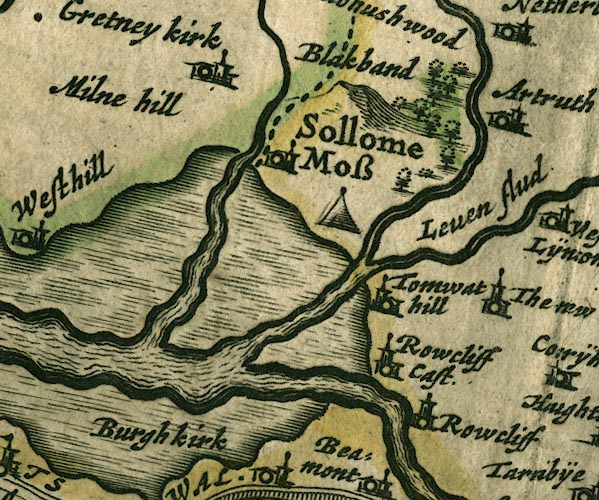
JAN3NY36.jpg
"Sollome Moss"
No symbol; the label may apply to the tent symbol ie the Battle of Solway Moss.
item:- JandMN : 88
Image © see bottom of page
placename:- Sollome Moss
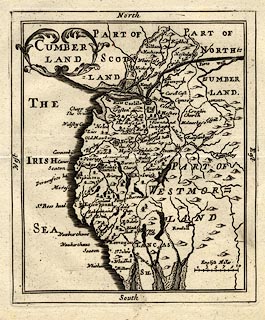 click to enlarge
click to enlargeSEL9.jpg
"Sollome moss"
area of marsh
item:- Dove Cottage : 2007.38.89
Image © see bottom of page
placename:- Sollome Mosse
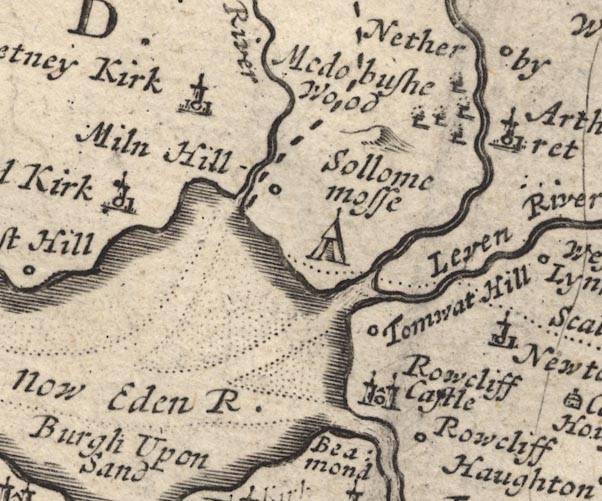
MD12NY36.jpg
"Sollome mosse"
Labelling a tent symbol for a battle site or the moss itself.
item:- JandMN : 90
Image © see bottom of page
placename:- Sollome Moss

BO18NY36.jpg
"Sollome Moss"
tussocks
item:- Armitt Library : 2008.14.10
Image © see bottom of page
placename:- Solway Moss
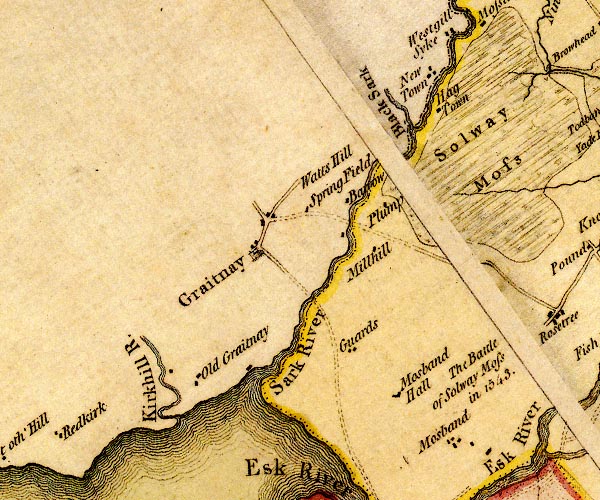
D4NY36NW.jpg
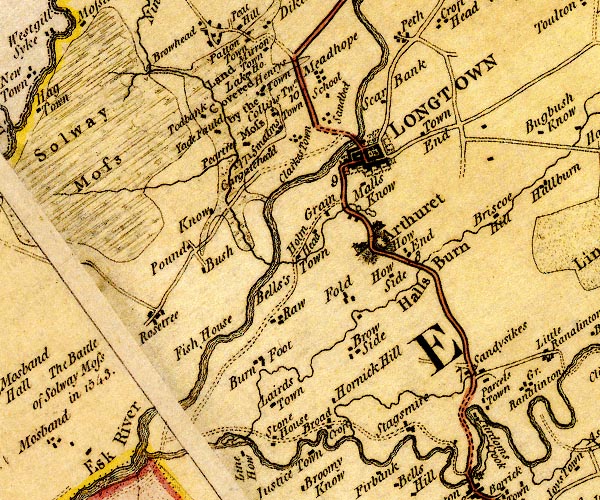
D4NY36NE.jpg
"Solway Moss"
moss
item:- Carlisle Library : Map 2
Images © Carlisle Library
placename:- Sollom Mosse
 goto source
goto sourcePage 176:- "..."
"... Beyond this river Esk the country for some miles is accounted part of England, in which is Sollom-mosse, ..."
placename:- Solom Moss
item:- placename, Solway Moss; peat digging; eruption; Solway Flow
 goto source
goto sourcePage 188:- "..."
"... Within it [Arthuret] lies a noted morass, commonly called Solom moss, from a small village of that name on the Scotch side. ..."
"Solom or Solway Moss consists of 1600 acres, raised a little above the cultivated tract, a mass of thin peaty mud, with a crust too weak in the driest summer to bear a man's weight. In December 1769 it burst its banks by the excessive winter rains of three days continuance preceeding, and the too near approaches of the peat diggers, which had weakened the crust at a gap about 50 yards wide. About 300 acres of moss discharged themselves in a black stream charged with large masses of peat, which surrounded the cottages, and covered 400 acres of cultivated land. Many cattle were drowned, but not one human life lost. It filled the whole valley, leaving behind it great heaps of turf from 3 to 15 and 30 feet, memorials of its height, and at last reached and fell into the Esk. The surface of the moss was reduced near 25 feet sunk into a hollow form."
"In that part called Solway Flow, in the year 1771, was a memorable out-burst of water, moss, gravel, sand, and stones, which spread over and destroyed about 600 acres of fine level fertile ground, and totally altered the face of that part of the country. The moss had been observed to have risen imperceptibly for a long time before. It began to move in the night of November 16, and continued in movement for three days slowly forward, so that the inhabitants generally had time to get off their cattle and other moveables before their houses were burried or rendered inaccessible. The mouth of the breach was about 20 yards wide, and when it began to flow was in depth between five and six yards. By this eruption 28 families were driven from their habitations, and their grounds rendered totally useless and seemed irrecoverable by reason of the depth of covering of the morass and other rubbish to the depth of at least 15 feet. but by means of hushing upwards of 100 acres have been cleared; and, by the indefatigable industry of the owner, it is thought the whole will be recovered, though it will be attended with great expence. Out of the aforesaid moss, Dr. Todd says, have frequently been dug human bones, silver coins of the later ages, earthen pots, iron, and brass weapons, with oak and fir trees of unusual magnitude."
placename:- Solway Moss
item:- Liber Studiorum
Page 157:- "..."
"Solway Moss is passed on the way. Turner has made it the subject of one of the finest plates in his Liber Studiorum, and has imported into the view some mountains that are not there, together with some weather which, fortunately for the present writer, was equally absent when he passed this way."
"..."
HP01p158.txt
Page 158:- "..."
 click to enlarge
click to enlargeHP0127.jpg
"THE ROAD PAST SOLWAY MOSS."
"Turner therefore does right in so romantically treating the subject, and I am merely a pictorial reporter, setting down only what I see. But at any rate, while Turner might dissuade the pilgrim, with his storm overhead and his fathomless bog beneath, whence apparently some wretches are just escaping with their lives, you see by the modern sketch that there is at least a hard high road running by."
"In November, 1771, the Bog of Solway burst like a torrent, being charged with exceptionally heavy rains, and destroyed some thirty villages."
"..."
item:- JandMN : 1055.29
Image © see bottom of page
